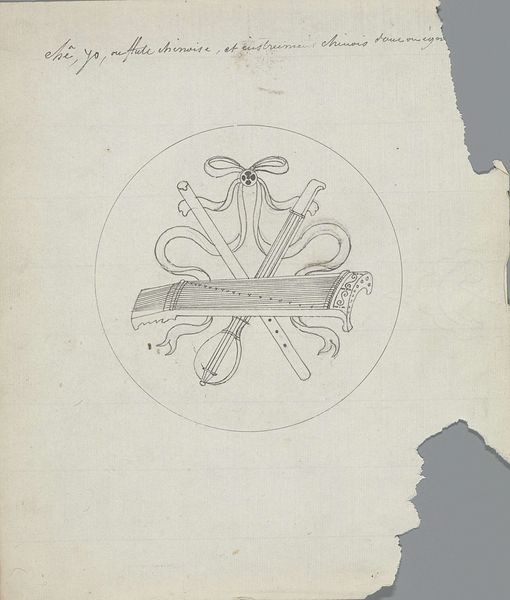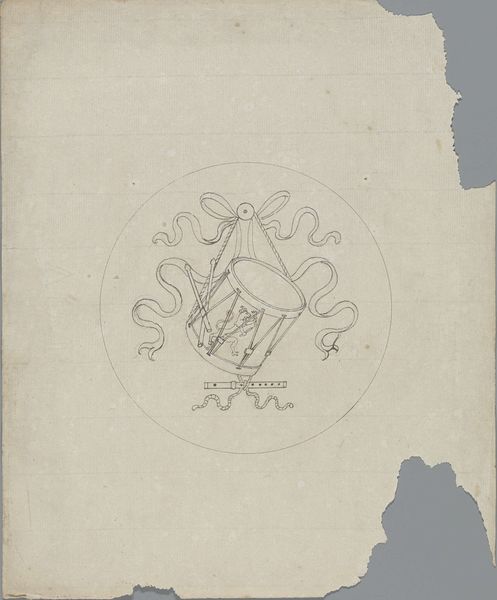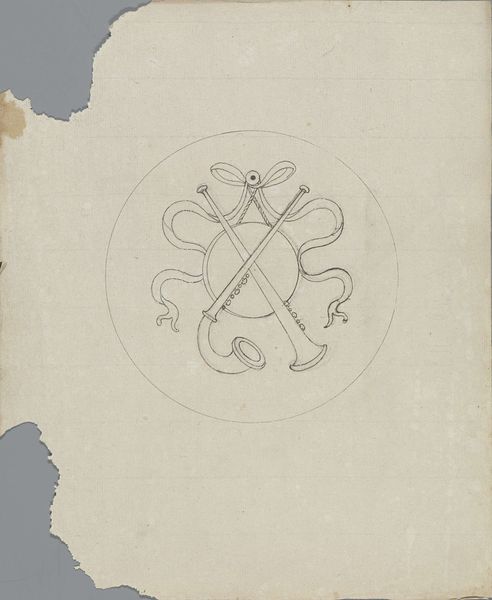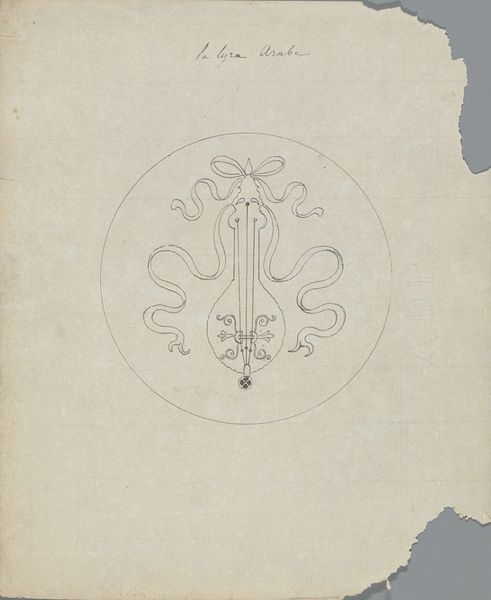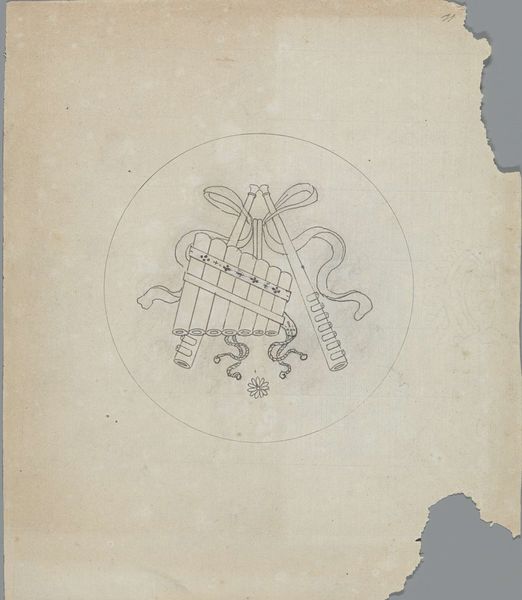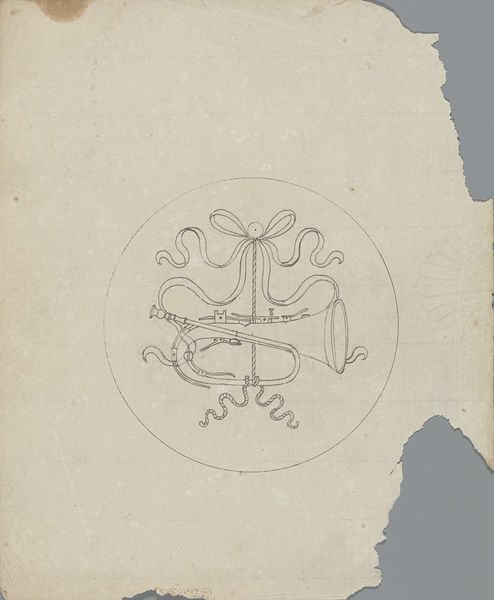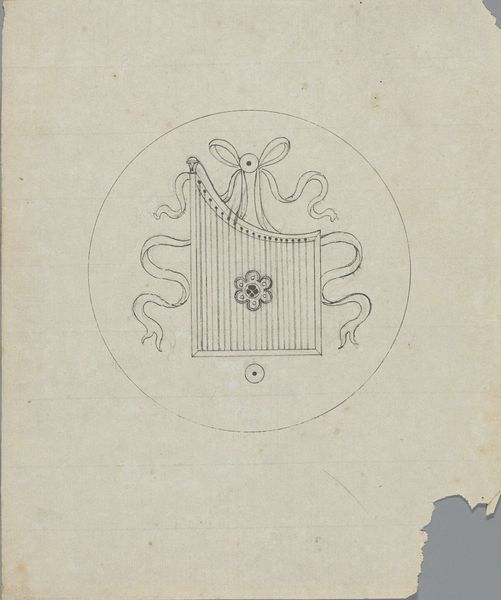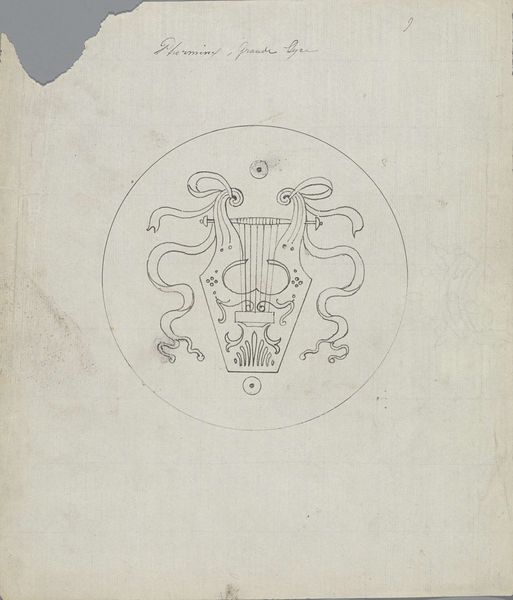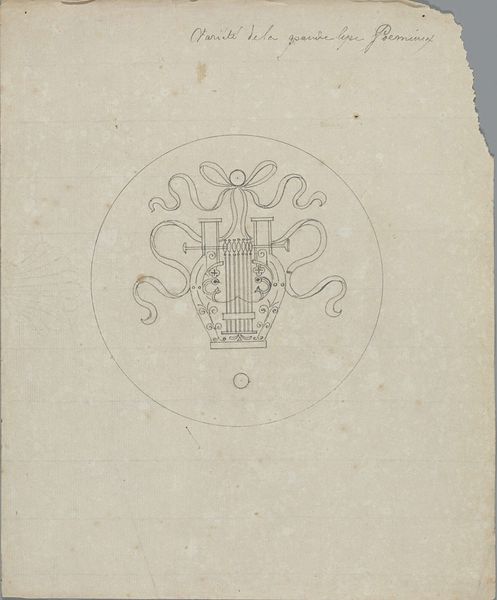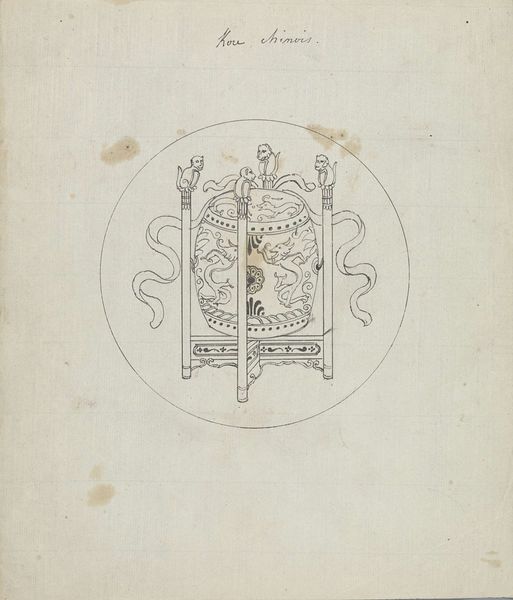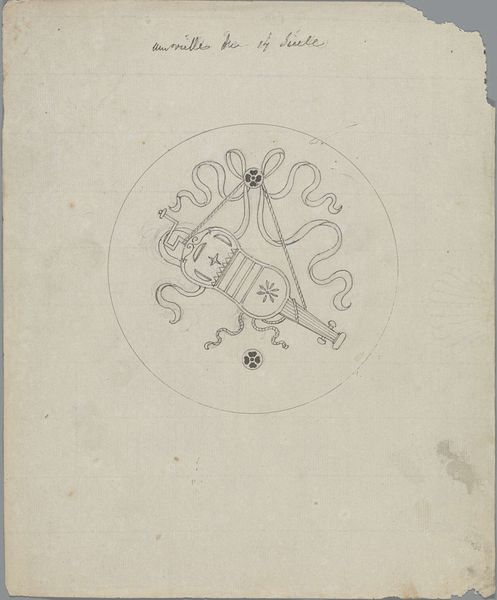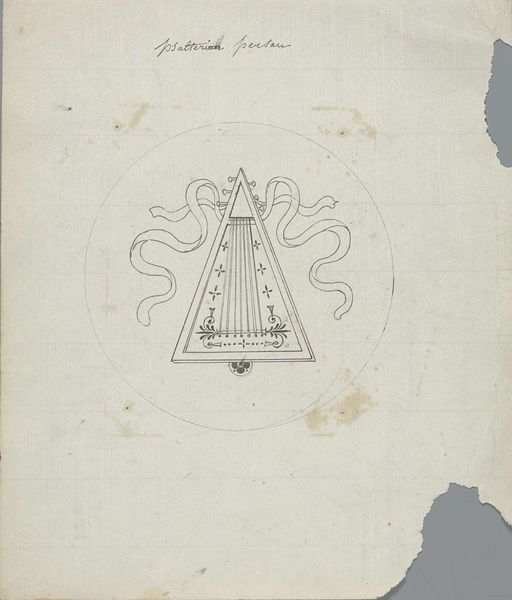![Le Tricorde et instrument epercettes [?] antique by Pierre Félix van Doren](/_next/image?url=https%3A%2F%2Fd2w8kbdekdi1gv.cloudfront.net%2FeyJidWNrZXQiOiAiYXJ0ZXJhLWltYWdlcy1idWNrZXQiLCAia2V5IjogImFydHdvcmtzLzA3ZDZmNDI3LWFiYTAtNDdhYS04YmUzLWJhOGQyY2UzYjFmYy8wN2Q2ZjQyNy1hYmEwLTQ3YWEtOGJlMy1iYThkMmNlM2IxZmNfZnVsbC5qcGciLCAiZWRpdHMiOiB7InJlc2l6ZSI6IHsid2lkdGgiOiAxOTIwLCAiaGVpZ2h0IjogMTkyMCwgImZpdCI6ICJpbnNpZGUifX19&w=3840&q=75)
drawing, paper, ink
#
drawing
#
paper
#
ink
#
geometric
#
line
#
sketchbook drawing
#
academic-art
Dimensions: height 253 mm, width 208 mm, diameter 123 mm
Copyright: Rijks Museum: Open Domain
Curator: This intriguing drawing, titled "Le Tricorde et instrument epercettes [?] antique," comes to us from before 1828, created by Pierre Félix van Doren. It's rendered in ink on paper. I’m immediately drawn to the geometric simplicity. It's quite elegant, almost architectural in its precision. Editor: My initial reaction is of something fragile, a blueprint perhaps for a performance that never was. The lone stringed instrument floats in this perfectly circular space, like an artifact from a time when music carried very different meanings. Is there something known about van Doren’s role as an engraver of banknotes to this piece? Curator: The precision required for bank note engravings is evident in his art, and would indeed have influenced this composition. It evokes a sense of classical order. And, although in places the exactness seems compromised, the use of the circle suggests a complete system, a microcosm. Considering his place and time, this symbol resonates with the rise of revolutionary bourgeois political theory and ideas about liberty, while retaining visual forms associated with elite symbols of art, culture and taste. The title suggests an “antique” origin, too, implying not a representation but a recollection, not to mention its position relative to similar artworks made by this artist in sketchbooks or as preparatory drawing studies. Editor: True. Van Doren manipulates those fine lines beautifully, lending to the object both volume and depth while existing on the flattened page. The textures in those looped ribbons create movement as well. Is this academic attention to detail, like his approach to form and shadow, also an illusion? And what of its position on that damaged, irregularly shaped support sheet of paper? We can tell from this particular image's surface details that this work was itself part of an older, larger source, as a piece of discarded ephemera! Curator: That tension between order and irregularity certainly adds a layer of complexity. If you remove it from a purely formal exercise, the instruments depicted – the tricorn and whatever else this second, indefinable “tool” actually is – carry the echoes of ceremony and cultural power structures, both past and future. The meticulous draftsmanship reinforces a sense of idealized tradition, even while hinting at social changes to come, and those tears in the page disrupt any sense of stable or unassailable truths that form that academic world. Editor: It is fascinating how van Doren uses line to capture these contrasting elements—precision versus fluidity, classical design and revolution—and his unique material sensibilities serve as visual markers on its own art historical path through time. Curator: Indeed. "Le Tricorde et instrument epercettes [?] antique" gives us much to think about with regards to academic art and artistic technique.
Comments
No comments
Be the first to comment and join the conversation on the ultimate creative platform.
